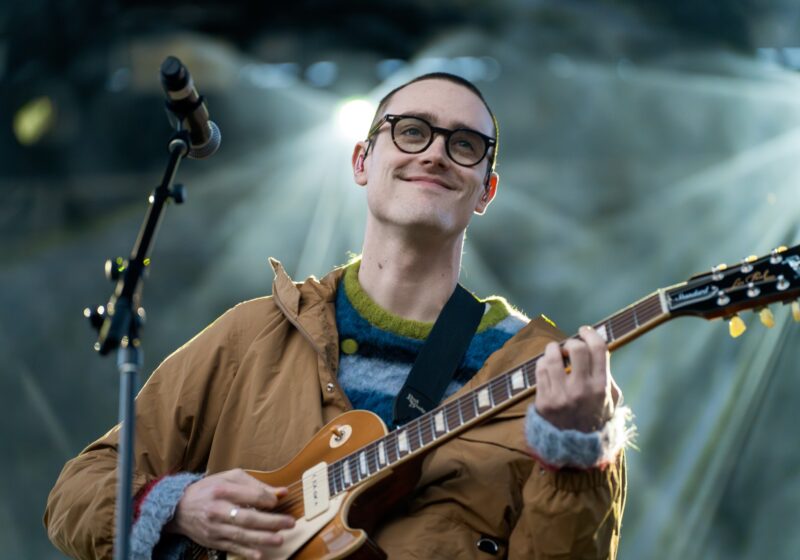After over 20 years and a short-lived boxing career in between, the name Tonya Harding is now on our minds. To be frank, before a few months ago, Harding’s story and even her name were completely foreign to me.
But on Friday, the highly anticipated biopic on Harding’s life — staring Australian actress Margot Robbie — graced the silver screen. It has elicited rave reviews, but what has stuck with many critics, however, is the humanization of a figure skater often regarded as a villain.
Harding participated in an appalling scheme that involved two men assaulting rival Nancy Kerrigan and then attempting to eliminate Kerrigan from competition, a move that in turn ended Harding’s skating career.
Though controversial, Harding was a trailblazer. In 1991, the skater nailed a triple axel move in international competition, the first American woman to achieve that feat.
As of late, the portrayal of female athletes in film has become a fad, or at least more apparent.
Earlier this year, I touched upon the blatant symbolism portrayed in October’s “The Battle of the Sexes,” the story of Billie Jean King’s historic tennis match against Bobby Riggs.
This week, I stumbled upon a tweet from King promoting a documentary called “Supergirl,” which tells the story of Orthodox Jewish teenager Naomi Kutin, who broke records in powerlifting as an 8-year-old. The film traces the New Jersey native’s extraordinary story, revealing her battles with religion, health, and adolescence.
The documentary will air live on PBS’ “Independent Lens” series on Dec. 18, and I couldn’t be more elated. Stories of women in sports are taking center stage, and it’s about time. But still, I question the trend, and wonder, why now?
Many are surprised when I say that this past July was the first time I watched the revered sports film “A League of Their Own.” Directed by Penny Marshall and starring Tom Hanks and Geena Davis, it’s usually the only film about women regarded by most publications and blogs as one of the best sports movies of all time.
It was hard for me to understand why, on most lists, I’d be lucky to see a film about women. But maybe this is a function of what themes follow female sports narratives. According to author Viridiana Lieberman in her book “Sports Heroines on Film,” femininity and athleticism are clashing ideals that in every women’s sports story are reconciled.
There is usually an underlying storyline highlighting the time period, illustrating and appealing to the evolution of women’s freedoms as members of society. Periodically, women’s sports stories digress from the sport itself, and that’s okay, and even is what makes them more compelling.
But what we must also ponder is why stories such as Harding’s and King’s are revived years later and why they even become cultural. This is all reliant on how the sports media covers these events.
Are they sensationalized, or reported on as lackluster developments?
Recently, “Everybody Talks” celebrated its three-year anniversary as a talkshow and an idea. Over the past three years, women’s stories in sports have come out of hiding, and continue to overcome the niche category they are systematically assigned.
Three years ago, personalities such as Sarah Spain and Kate Fagan weren’t breaking down U.S. Women’s Soccer or calling out a sexist comment made by a NFL star. Also, women have their own top plays on SportsCenter. ESPN veteran Sage Steele narrates the ESPNW Top 3.
Giant strides have been made, but to get the most captivating women’s sports scripts to the big screen, we must pay attention to “Gender-Bland Sexism.” According to Michela Musto, Cheryl Cooky, and Michael Messner, women’s sports stories often are communicated in a less entertaining and less energetic style. Look out for this next time you watch a UConn Huskies basketball game and compare the sights and sounds from the booth to watching the Celtics vs. Lakers instead.
The idea is, women indeed need to be covered fairly and accurately, but maybe “I, Tonya” and its message are more pertinent now than we think.
Owen Gleiberman of Variety praised the film for providing us with an offbeat lens with which to view female athletes and women in general. Instead of a supernatural role model or an alluring woman who exudes athletic talent, we instead cheer on a “world-class feminine lowlife” who just wants a shot at her dream after years of abuse.
Harding isn’t an role model for young women, but she shows us the challenges all females grapple with in pursuit of their aspirations. Pressures concerning beauty or familial values and upbringing are all features of the female experience, which young women such as Naomi “Supergirl” Kutin face daily.
In a New York Times piece featuring the 16-year-old “Supergirl,” her father explained how he trained his daughter to be athletically motivated. His response was predictable: “The first three ‘Rocky’ movies.”
As we move into 2018, I am reminded of the amount of diverse female movers and shakers that exists in sports — think Maya Moore, Megan Rapinoe, Serena Williams.
Instead of achieving athletic inspiration from the story of a Philly-born caucasian male boxer, here’s to future generations achieving that same inspiration from a film about a woman of color from Compton.
“Everybody Talks” is a radio show on WRUR’s the Sting that highlights women’s involvement in sports and the social issues that surround athletics. You can listen to it every Friday from 1–2 p.m. on thesting.wrur.org.

